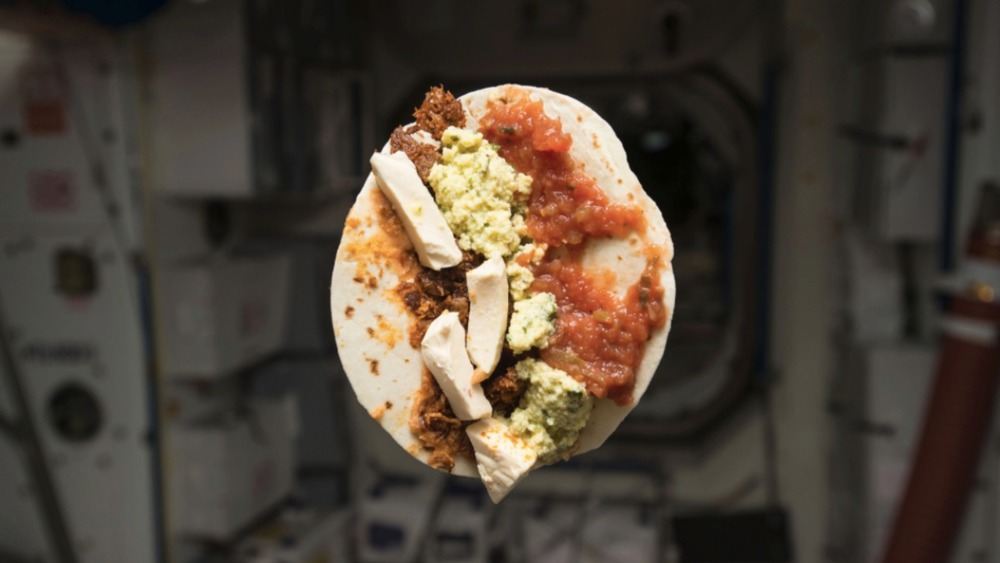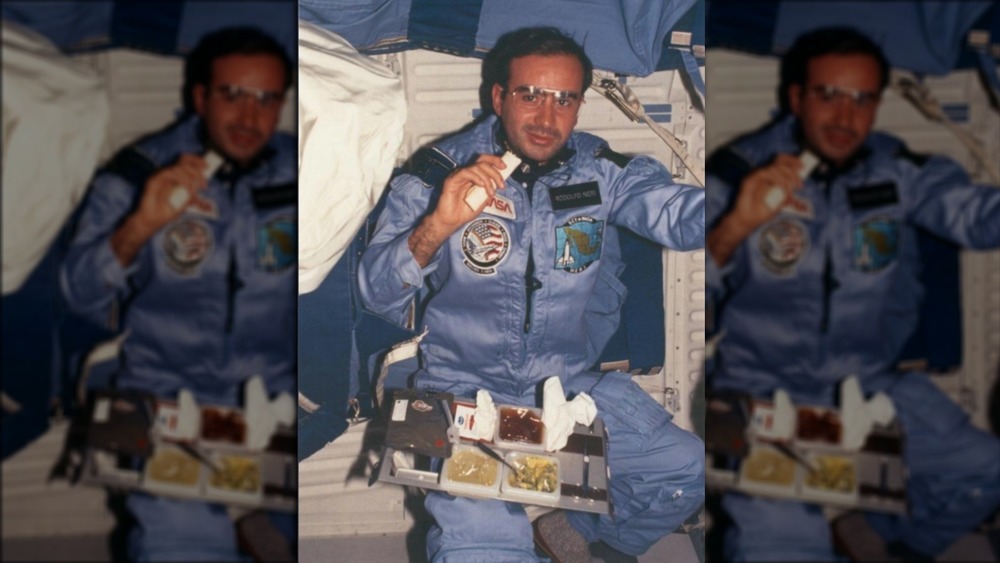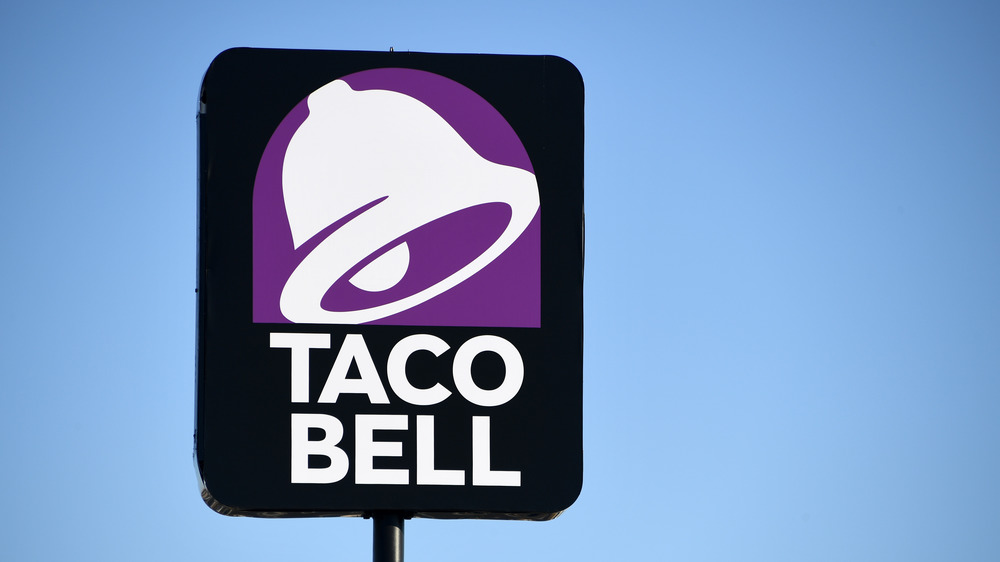The Strange Connection Between NASA And Taco Bell
Feeding astronauts has always been a unique challenge for NASA. There's the limited space, the lack of refrigeration, and, of course, the whole microgravity part of being in orbit. According to NASA's Tumblr, the first meal eaten by an American astronaut in space was applesauce squeezed like toothpaste from an aluminum tube.
Luckily, food tech at the administration has gotten quite a bit more evolved since then. From applesauce, they were able to upgrade to things like MREs (meals ready to eat), but by the time astronauts had been eating them for a good decade or so, the meals were found to be too high in sodium, so NASA moved onto freeze-drying pre-cooked food. As CNET reported during a trip to the agency's Food Lab in 2014, NASA's food scientists have been able to reduce the sodium content of their astronauts' diets by 43 percent. NASA was so proud of its Space Food System Sodium Reformulation Team that it was awarded a Group Achievement Award for its outstanding effort.
In the days of Space Shuttle missions, astronauts were sent up into orbit with stuff to make sandwiches, but the bread created another complication to insterstellar safety: too many crumbs. The crumbs floating around in the microgravity ended up clogging filters and other important equipment. Luckily, an astronaut from the USA's neighbor to the south would provide an ingenious solution to the problem.
Rodolfo Neri Vela introduced the tortilla to outer space
Mexican astronaut Rodolfo Neri Vela joined NASA personnel on a Space Shuttle mission in 1985. Wanting to take a bit of home with him into outer space, he requested that tortillas be a part of his food supply. According to Round Up Reads, the other astronauts on board noticed how his tortillas didn't pose the problem of creating crumbs, and they all got on board (so to speak). The Mexican staple has been an astronaut favorite ever since.
This being outer space, however, there's no such thing as a simple fix. According to CNET, the administration was unable to find the right kinds of tortillas to send up into space. It's not like it's hard to find a tortilla near the Kennedy Space Center, in Cape Canaveral, Florida. Vickie Kloeris, manager of the International Space Station Food System, said they needed a specific kind of tortilla, one that fit the administration's specific microbiological needs. They needed tortillas that would last a long time in space, especially as technology improved and missions went from averages of days to multiple weeks. NASA wasn't able to find anyone nearby who was making tortillas that weren't meant to be gone by breakfast. So the administration started making them itself. It already had a history of making "extended shelf-life bread products" for its missions, so it just had to learn how to do the same thing with tortillas.
NASA's tortillas worked for a while, but then Taco Bell stepped in to help
NASA food scientists toiled away and were finally able to produce a tortilla that would last as long as four months. This was great for Space Shuttle missions, but once the International Space Station was launched in 1998, and astronauts were able to spend an average of six months in orbit, the demands on the tortilla returned.
So where do the scientists at the world's leading aerospace agency go when they are met with such a culinary conundrum? Why, the genius food experts who gave the world the Double Decker Taco, the Grilled Stuft Burrito, the Cheesy Gordita Crunch, and the Mexican Pizza, of course. That's right: When NASA couldn't make a tortilla that would last up to six months, it turned to Taco Bell for help.
It makes a lot of sense, actually. Fast food is known for having menu items with questionable and downright alarming shelf life, so who better for the job? In the 1990s, Taco Bell started producing a pack of tortillas for commercial sale, designed to last up to nine months. That's right: nine months. It was great news for astronauts, for whom many of the things they eat are officially considered to be "experimental foods," but probably not so much for the general Enchirito-eating public. Who knows what was in those things? But the tortillas were exactly what NASA needed. "So we got out of the tortilla [making] business," said Kloeris.


